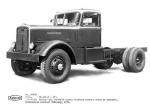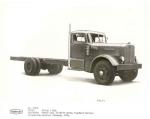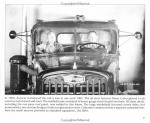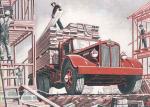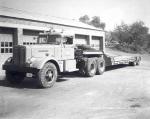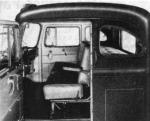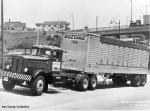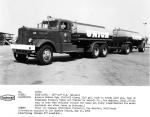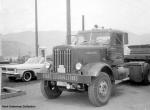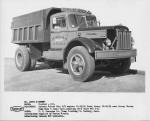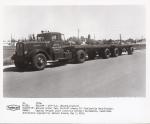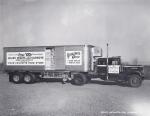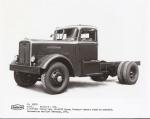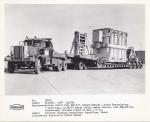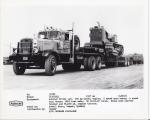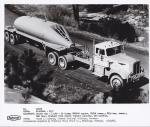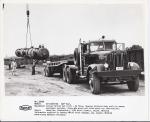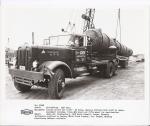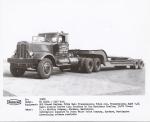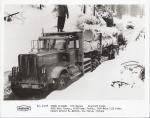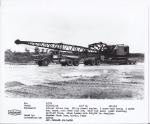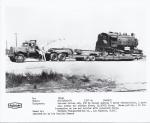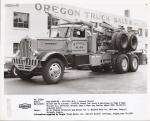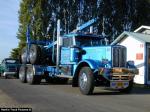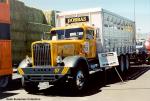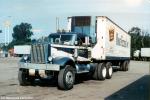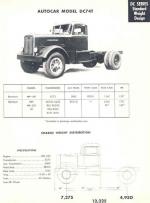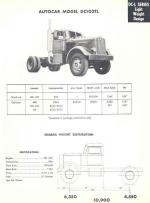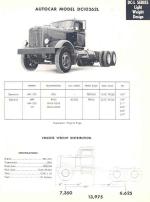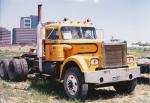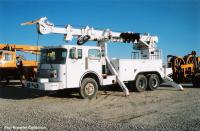Autocar » C / DC SFA with all-steel cab
In 1950, the Autocar introduced the cab it was to use until 1987. The all-steel Autocar Driver Cab replaced a cab constructed of wood and steel. The welded frame consisted of heavy-gauge steel channel sections. All sheet metal, including the one-piece roof panel, was welded to this frame. The large windshield featured curved sides, but maintained a two-section design to reduce replacement cost. The company introduced a sleeper cab in 1952.
In 1950, the range of vehicles with set-forward front axle (SFA) consisted of families C-50, C-70, C-90 and DC-100/102. Gasoline models of the C range were equipped with engines of its own production (377, 477 or 501), as well as Continental R6572 or R6602. For diesel versions DC a Cummins HB600 or NHB600 engine was used. By 1954, almost all the models with set-forward front axle had been eliminated. There were only gasoline models C-84T (tractor) and C-90D (dump) with 501 engine, CL-84T with a new engine Le Roi T-H540 and diesel models DC-74 and DC-102 with Cummins.
In 1953, due to financial problems Autocar came under the control of White Co. Production was transferred to Ikston, Pennsylvania. By 1955 the range of commercial vehicles have drastically reduced, while the production of own engines was completely stopped. In the range of trucks with set-forward front axle were only diesel models DC74 and DC102, equipped with the same Cummins HRB-600 as before. In 1956, a lightweight model DC-102 TL with aluminum cab was designed for West Coast operators. In 1962, Autocar presented DC9264 off-highway tandem truck rated at 62,500 lbs GVW.



